Spritivity Symmetry projects at RDFZ School, Beijing
“The use of the geometric principles of symmetry for the description and understanding of decorated forms represents the union of two normally separate disciplines – mathematics and design.” (Washburn et al., 1988)
Symmetry is not an unfamiliar concept to most students in China, because it is a very important component in mathematics education at secondary school level. Here are
some agrammatic instances of symmetry as they appear in a Chinese Grade 8 mathematics textbook.
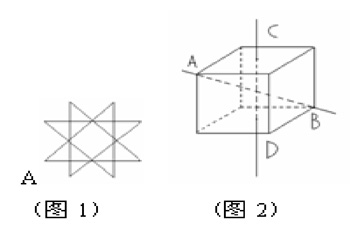
From an aesthetic point of view, an instance of symmetry contains natural beauty in itself. Here are some instances of symmetry in a variety of material domains..

Click here to explore some instantiations of symmetry in Chinese architecture , art and philosophy.
A group of 13-14 year old Chinese students from RDFZ School felt like doing a Spritivity project that centred around the idea of symmetry. They chose to look at Yuan Ming Yuan - The Garden of Perfect Splendour, which is one of the key cultural relic protection sites in China. Historically, Yuan Ming Yuan was a royal garden, but now it has become a public open place. It enjoys the title “world heritage” or “world miracle” and indeed is an icon of Chinese art and architecture.
Click for a brief history of Yuan Ming Yuan
The style of this architecture-Yuan Ming Yuan is quite prominent and well-recognized, very broadly speaking, the essence is the instantiation of “symmetry”. This feature is deeply related to Chinese philosophies and culture. Lots of things could be discussed in relation to it. “Yuan” stands for full and round, in Chinese it means perfect; “Ming” refers to wisdom, which is what the Emperor desires to have. The last “Yuan” is different from the first “Yuan”, although the pronunciations are exactly the same. The last “Yuan” means garden, so altogether, “Yuan Ming Yuan” is translated as Garden of Perfect Splendour.
Click here for an overview of the Yuan Ming Yuan Site
On 14th August, 2007, the group of students from RDFZ school,well-equipped with cameras, sun hat, bottles of water (Beijing’s summer is extremely hot, about 35 degree centigrade) etc, set out at an early morning for Yuan Ming Yuan. Prior to the trip, students had been taught about symmetry and its application in mathematics. Yet they couldn’t wait to observe instances of symmetry as potential sprites in the “life-world” with their own eyes. Although many of the students had been to Yuan Ming Yuan before, they expected to experience something new and fresh on this visit.
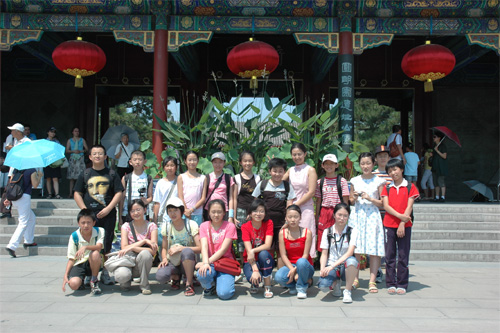
The itinerary was simply planned: after the cultural catastrophe in 19th century, only the European-style palaces survived the fire since they were made of stone. So the first stop would be those ruined stones of European buildings that are still standing on the site today
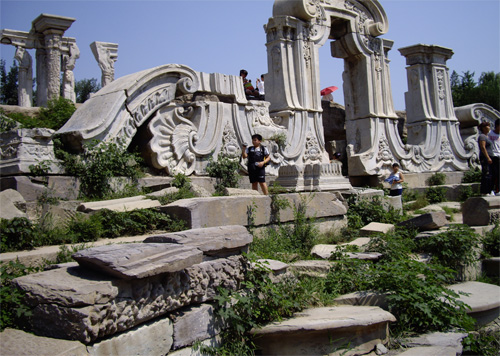
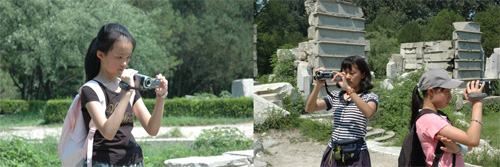
The second stop, worth have a look at, was another magically-surviving Chinese-style building in the outlying Elegant Spring Garden. It was known that the Imperial Court restored this building and, indeed, had tried to rebuild the whole complex of the Imperial Gardens, but it was impossible to muster the money and resources for such an immense task due to the difficult situation of China at the time.
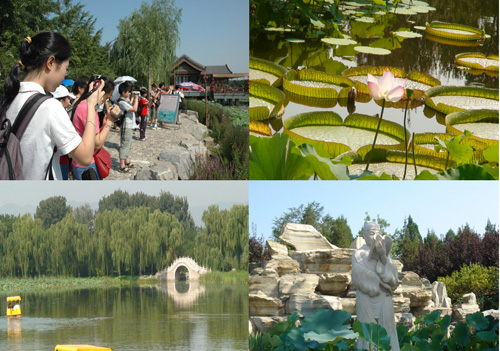
There was a more challenging work waiting for students after they were back from the trip. In the next couple of days, students were asked to work in groups analyzing, collecting data, searching further information they need to connect the idea of symmetry the found in the books and the grounding of instances of symmetry in the pictures they took in the Yang Min Yuan Gardens.
Three perspectives, in terms of “aesthetic” “historical” and “social”, which could inform these instantiations of symmetry sprites, were suggested for consideration in students’ analytical reports. During the course, they shared and negotiated their views on many interesting things about symmetry that they had discovered from the visit. Last but not the least, each group of students needed to prepare a formal presentation with the support of technicians and teachers.
Project outputs
The output of students’ work was amazing. And it was a surprise that students automatically expanded their understandings of symmetry to a wider Spritivity context: not only the buildings in Yuan Ming Yuan were analysed, but also the beauty of a variety of instantiations of symmetry in every day life was mentioned and discussed as well.
Daren Wang: From Symmetry(Yuan Ming Yuan) to Olympics
Daren demonstrates his understanding of Chinese art, such as Chinese tie, the buildings in Yuan Ming Yuan etc., which contains symmetric design. He links the idea of symmetry with Olympic Games.
Jeffery Liu: Interpret Dreams
Jeffery imagines himself to work as a tour guide, and he tells us about the history and the symmetric characteristic of the buildings in Yuan Ming Yuan.
Xueyun Gu: On Beijing’s trip
Xueyun summarises traditional architecture and art in Beijing. She considers Yuan Ming Yuan is of particular meaning to Beijing, and she shows us the blueprint of Yuan Ming Yuan’s future.
Haoling Xiang: Symmetry: Beauty of harmony
Haoling wants to give us a big picture of how symmetry looks like in buildings, art and everyday’s life. The common theme of these beautiful instantiations is harmony.
Yifang Shi: The destruction of Yuan Ming Yuan
“Dr.”Shi gives us a lecture about the history of Yuan Ming Yuan, dating back to 19th century…
Click nere to download the students’ presentions of their projects